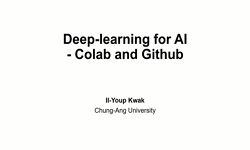In this study, we investigated how accurately the BERT model can predict Chinese directional complement. In addition, we analyzed which words the BERT model uses as an important clue in the Chinese directional complement inference process. According t...
http://chineseinput.net/에서 pinyin(병음)방식으로 중국어를 변환할 수 있습니다.
변환된 중국어를 복사하여 사용하시면 됩니다.
- 中文 을 입력하시려면 zhongwen을 입력하시고 space를누르시면됩니다.
- 北京 을 입력하시려면 beijing을 입력하시고 space를 누르시면 됩니다.

딥러닝 언어모델과 중국어 문법 ―BERT를 활용한 방향보어의 예측 모형을 중심으로 = Deep Learning Language Model and Chinese Grammar -Focusing on the Prediction Model of Directional Complements using BERT
한글로보기https://www.riss.kr/link?id=A107306652
- 저자
- 발행기관
- 학술지명
- 권호사항
-
발행연도
2021
-
작성언어
-
- 주제어
-
등재정보
KCI등재
-
자료형태
학술저널
-
수록면
29-57(29쪽)
-
KCI 피인용횟수
0
- DOI식별코드
- 제공처
- 소장기관
-
0
상세조회 -
0
다운로드
부가정보
다국어 초록 (Multilingual Abstract)
In this study, we investigated how accurately the BERT model can predict Chinese directional complement. In addition, we analyzed which words the BERT model uses as an important clue in the Chinese directional complement inference process. According to the results of this study, it can be seen that the BERT model shows excellent performance in inferring distributional features and grammatical relationships based on transfer learning. Results of experiments with five Chinese directional complements show that the accuracy rate of predictions is quite high. In addition, as a result of analysis using the masked language model, it was found that the BERT model appropriately uses important clues to determine Chinese directional complement in context.
We believe that this study is not only meaningful in the field of NLP, but also provides insight into Chinese grammar research or language education. If this methodology is properly utilized, it will be possible to establish an application system for Chinese grammar research and education. In Neural network models, sufficient language data learning allows us to predict which language expressions are more natural to use. Proper use of these advantages will give us insight into Chinese grammatical functions. This Chinese grammar prediction system will also help Chinese learners improve their skills by showing them what expressions are grammatically correct.
참고문헌 (Reference)
1 김윤정, "현대중국어 방향보어구조의 함의 재조명" 한국중어중문학회 (61) : 459-478, 2015
2 이기창, "한국어 임베딩" 에이콘출판사. 2019
3 양천천, "중국어 보어의 학습방안 연구" 동아대 2019
4 유수경, "중국어 방향보어의 상적 기능에 대한 고찰 - ‘下来’와 ‘下去’의 코퍼스 분석에 근거하여" 한국중국언어학회 (89) : 159-193, 2020
5 강병규, "신경망 기계번역의 작동 원리와 번역의 정확률 - 중한 번역을 실례로" 한국중어중문학회 (73) : 253-295, 2018
6 최규발, "방향보어의 문법적 의미 ― ‘起來’를 중심으로" 중국학연구소 (24) : 1-17, 2008
7 박정구, "방향동사의 복합술어 형성시의 논항구조 설정 및 논항 분포의 원리와 조건 연구" 한국중국언어학회 (19) : 167-200, 2004
8 車慧, "韓國留學生習得漢語補語的偏誤分析" 遼寧師範大學 2006
9 丁銀貞, "韓國學生學習漢語語法的困難和對策" 華東師範大學 2010
10 呂叔湘, "現代漢語八百詞" 商務印書館 1999
1 김윤정, "현대중국어 방향보어구조의 함의 재조명" 한국중어중문학회 (61) : 459-478, 2015
2 이기창, "한국어 임베딩" 에이콘출판사. 2019
3 양천천, "중국어 보어의 학습방안 연구" 동아대 2019
4 유수경, "중국어 방향보어의 상적 기능에 대한 고찰 - ‘下来’와 ‘下去’의 코퍼스 분석에 근거하여" 한국중국언어학회 (89) : 159-193, 2020
5 강병규, "신경망 기계번역의 작동 원리와 번역의 정확률 - 중한 번역을 실례로" 한국중어중문학회 (73) : 253-295, 2018
6 최규발, "방향보어의 문법적 의미 ― ‘起來’를 중심으로" 중국학연구소 (24) : 1-17, 2008
7 박정구, "방향동사의 복합술어 형성시의 논항구조 설정 및 논항 분포의 원리와 조건 연구" 한국중국언어학회 (19) : 167-200, 2004
8 車慧, "韓國留學生習得漢語補語的偏誤分析" 遼寧師範大學 2006
9 丁銀貞, "韓國學生學習漢語語法的困難和對策" 華東師範大學 2010
10 呂叔湘, "現代漢語八百詞" 商務印書館 1999
11 劉月華, "實用現代漢語語法" 商務印書館 2001
12 Clark, K., "What Does BERT Look At? An Analysis of BERT's Attention"
13 Cui, Y., "Revisiting Pre-Trained Models for Chinese Natural Language Processing"
14 Cui, Y., "Pre-training with Whole Word Masking for Chinese BERT"
15 Devlin, J., "BERT: Pre-training of deep Bidirectional Transformers for Language Understanding"
16 Tenney, I., "BERT Rediscovers the Classical NLP Pipeline"
17 강병규, "AI의 중국 古典詩歌 창작 —詩語의 학습과 생성" 한국중국어문학회 100 : 183-208, 2019
동일학술지(권/호) 다른 논문
-
- 한국중국어문학회
- 김준연 ( Kim Joonyoun )
- 2021
- KCI등재
-
- 한국중국어문학회
- 이옥주 ( Lee Ok Joo )
- 2021
- KCI등재
-
- 한국중국어문학회
- 박지현 ( Park Jihyun )
- 2021
- KCI등재
-
- 한국중국어문학회
- 정진걸 ( Jeong Jin Geol )
- 2021
- KCI등재
분석정보
인용정보 인용지수 설명보기
학술지 이력
| 연월일 | 이력구분 | 이력상세 | 등재구분 |
|---|---|---|---|
| 2026 | 평가예정 | 재인증평가 신청대상 (재인증) | |
| 2020-01-01 | 평가 | 등재학술지 유지 (재인증) |  |
| 2017-01-01 | 평가 | 등재학술지 유지 (계속평가) |  |
| 2013-01-01 | 평가 | 등재 1차 FAIL (등재유지) |  |
| 2010-01-01 | 평가 | 등재학술지 유지 (등재유지) |  |
| 2008-01-01 | 평가 | 등재학술지 유지 (등재유지) |  |
| 2006-01-01 | 평가 | 등재학술지 유지 (등재유지) |  |
| 2004-01-01 | 평가 | 등재학술지 유지 (등재유지) |  |
| 2001-07-01 | 평가 | 등재학술지 선정 (등재후보2차) |  |
| 1999-01-01 | 평가 | 등재후보학술지 선정 (신규평가) |  |
학술지 인용정보
| 기준연도 | WOS-KCI 통합IF(2년) | KCIF(2년) | KCIF(3년) |
|---|---|---|---|
| 2016 | 0.26 | 0.26 | 0.29 |
| KCIF(4년) | KCIF(5년) | 중심성지수(3년) | 즉시성지수 |
| 0.28 | 0.32 | 0.635 | 0.21 |





 KCI
KCI KISS
KISS







